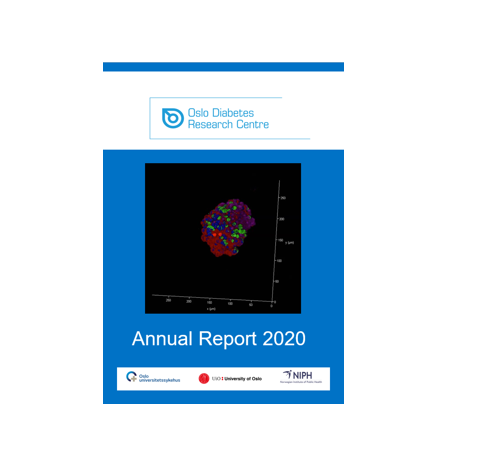Relation of Health-Related Quality of Life with Glycemic Control and Use of Diabetes Technology in Children and Adolescents with Type 1 Diabetes: Results from a National Population Based Study
/Lower HbA1c measurements and male sex were associated with higher health-related quality of life (HRQOL) in the age group 10-17 years, but not in children under 10 years. Insulin pump and CGM use were not significantly associated with HRQOL.
Heiko Bratke, Eva Biringer, Hanna D. Margeirsdottir, Pål R. Njølstad, and Torild Skrivarhaug
Journal of Diabetes Research, Volume 2022 | Article ID 8401328 | https://doi.org/10.1155/2022/8401328
NEW International Study: Impact of COVID-19 on long-term trends
/Impact of the COVID-19 pandemic on long-term trends in the prevalence of diabetic ketoacidosis at diagnosis of paediatric type 1 diabetes: an international multicentre study based on data from 13 national diabetes registries
Niels H Birkebaek*, Clemens Kamrath*, Julia M Grimsmann, Karin Aakesson, Valentino Cherubini, Klemen Dovc, Carine de Beaufort, Guy T Alonso, John W Gregory, Mary White, Torild Skrivarhaug, Zdenek Sumnik, Craig Jefferies, Thomas Hörtenhuber, Aveni Haynes, Martin De Bock, Jannet Svensson, Justin T Warner, Osman Gani, Rosaria Gesuita, Riccardo Schiaffini, Ragnar Hanas, Arleta Rewers, Alexander J Eckert, Reinhard W Holl, Ondrej Cinek
Published: October 03, 2022 DOI:https://doi.org/10.1016/S2213-8587(22)00246-7
Seminar programme: click here
Public Defence: Mette Eskild Bornstedt, December 12th 2022
/Cand.med. Mette Eskild Bornstedt at Institute of Clinical Medicine will be defending the thesis “The effect of vitamin D metabolites on glucose-stimulated insulin secretion (GSIS) and gene expression in murine insulin producing β-cells and pancreatic islets – an experimental study” for the degree of PhD (Philosophiae Doctor).
Time and place: Dec. 12, 2022 1:15 PM, Rødt auditorium i Laboratoriebygget (25), Ullevål universitetssykehus, Kirkeveien 166
For more information, click here
End-stage renal disease: incidence and prediction by coronary heart disease, and educational level. Follow-up from diagnosis of childhood-onset type 1 diabetes throughout Norway 1973–2017.
/Available online: April 6, 2022
Saeed M, Stene LC, Reisæter AV, Jenssen TG, Tell GS, Tapia G, Joner G, Skrivarhaug T. Annals of Epidemology: https://doi.org/10.1016/j.annepidem.2022.03.015
Purpose: To investigate incidence of end-stage renal disease (ESRD), and the association of education and coronary heart disease (CHD) with ESRD, in subjects throughout Norway followed from the diagnosis of childhood-onset type 1 diabetes.
Mortality trends in type 1 diabetes: a multicountry analysis of six population-based cohorts
/People with type 1 diabetes have a higher risk of mortality than do people without diabetes, but it is unclear how the excess risk of death in people with type 1 diabetes has changed over time.
In this study we assembled aggregate data on mortality during the period 2000–2016 in people with type 1 diabetes aged 0–79 years from Australia, Denmark, Latvia, Scotland, Spain (Catalonia) and the USA (Kaiser Permanente). We found an all-cause mortality rates in people with type 1 diabetes in the six data sources from 2000 to 2016. The excess mortality in people with type 1 diabetes relative to those without diabetes, declined over time in half of the six included data sources. People with type 1 diabetes still had a 2–5 times higher risk of death compared to those without diabetes Continuous improvement in the multidimensional management for people with type 1 diabetes is critical for on-going reductions in mortality.
How Long-Term Physical Activity May Reduce Insulin Resistance
/Insulin resistance is a core finding in patients with type 2 diabetes mellitus (T2DM) and physical activity has the potential of improving insulin resistance. In a newly published review, Sindre Lee Ødegaard and co-workers describe a model of potential mechanisms behind the beneficial effects of physical activity on insulin resistance. They briefly summarize an integrated physiological perspective on insulin resistance and describe the effects of long-term PA on signaling molecules involved in cellular responses.
Young Investigator Award 2021
/Oslo Diabetes Research Centre announces a Young Investigator Award for the best publication published between December 1, 2020 and December 1, 2021
Read MoreDiabetes Research Awards 2021
/The Norwegian Diabetes Association's research awards are awarded to Sindre Lee-Ødegård and Lars Christian Stene.
Read MoreNCDR: Annual report 2020
/Read the annual report from the Norwegian Childhood Diabetes Registry.
Read MoreCecilie Wium
/It was with great grief and sorrow we received the sad news that Cecilie passed away on June 28.
Read MoreFunding from RCN
/Gunn-Helen Moen has received funding for the project “Developing and Applying New Statistical Models to Test for Transgenerational Effects of Environmental Exposures in Pregnancy” from the Research Council of Norway.
Read MoreDigital disputation
/MD Ingun Toftemo at Institute of Health and Society will be defending the thesis Childhood obesity in a multiethnic society. Early life risk factors and communication with parents for the degree of PhD (Philosophiae Doctor) on June 8.
Read MoreReview article in JDOHaD
/Review article by Julia Onsrud Opsahl et al. in the June issue of JDOHaD: “Epigenetic signatures associated with maternal body mass index or gestational weight gain: a systematic review”
Read MoreNew article in Diabetes Care
/New article by Kari Anne Sveen et al. in Diabetes Care: “Autoantibodies Against Methylglyoxal-Modified Apolipoprotein B100 and ApoB100 Peptide Are Associated With Less Coronary Artery Atherosclerosis and Retinopathy in Long-Term Type 1 Diabetes”
Read MoreDigital disputation
/MSc Eline Birkeland at Institute of Clinical Medicine will be defending the thesis The Fiberdia study: Effects of inulin-type fructans on gut microbiota and regulation of blood glucose and appetite in type 2 diabetes: A randomised, placebo-controlled crossover trial for the degree of PhD (Philosophiae Doctor) on April 23.
Read MoreAnnual Report 2020
/Our Annual report from 2020 shows a highly active year with nearly one hundred papers published in international scientific journals, within a wide range of topics, from basal, clinical, epidemiological and translational research. More than 50 research projects are currently running, and four PhD students defended their theses during the year 2020.
Read MoreNovo Nordisk Foundation Lecture awarded to pioneer in Norwegian diabetes research
/For 30 years, Kåre Birkeland has been a pioneering researcher on diabetes spanning a broad spectrum of research fields, both in Norway and internationally. He is receiving the 2021 Novo Nordisk Foundation Lecture prize.
Read MoreNew article in Diabetes Care
/New article by Maryam Saeed et al. in Diabetes Care: “Serum Galectin-3 and Subsequent Risk of Coronary Heart Disease in Subjects With Childhood-Onset Type 1 Diabetes: A Cohort Study”
Read More

















